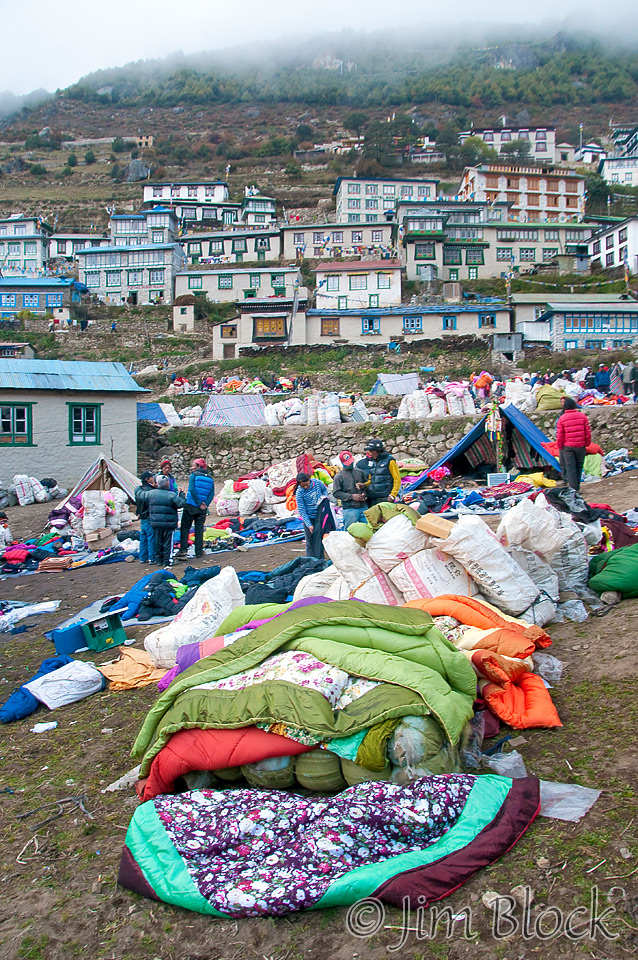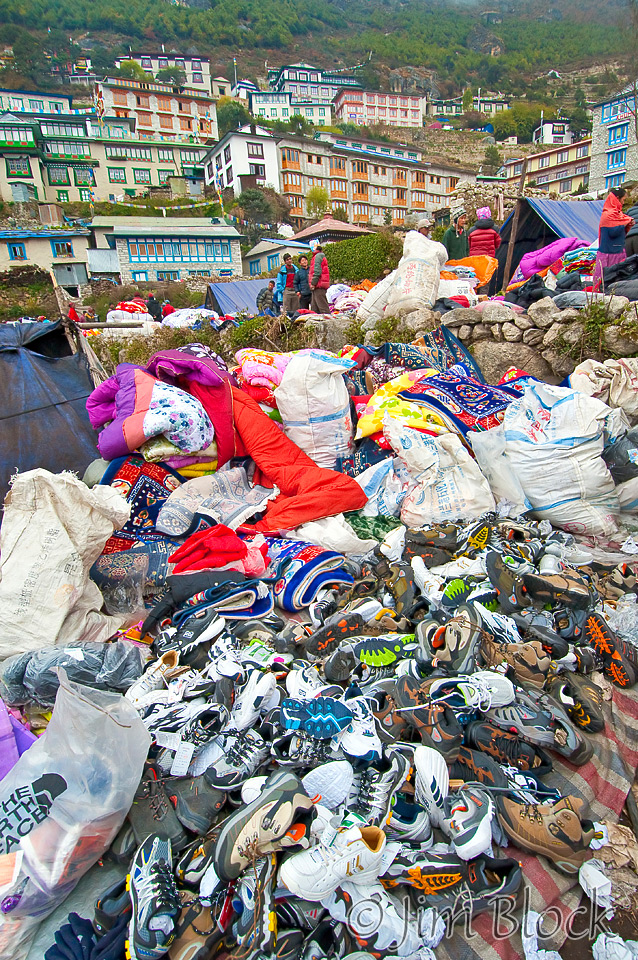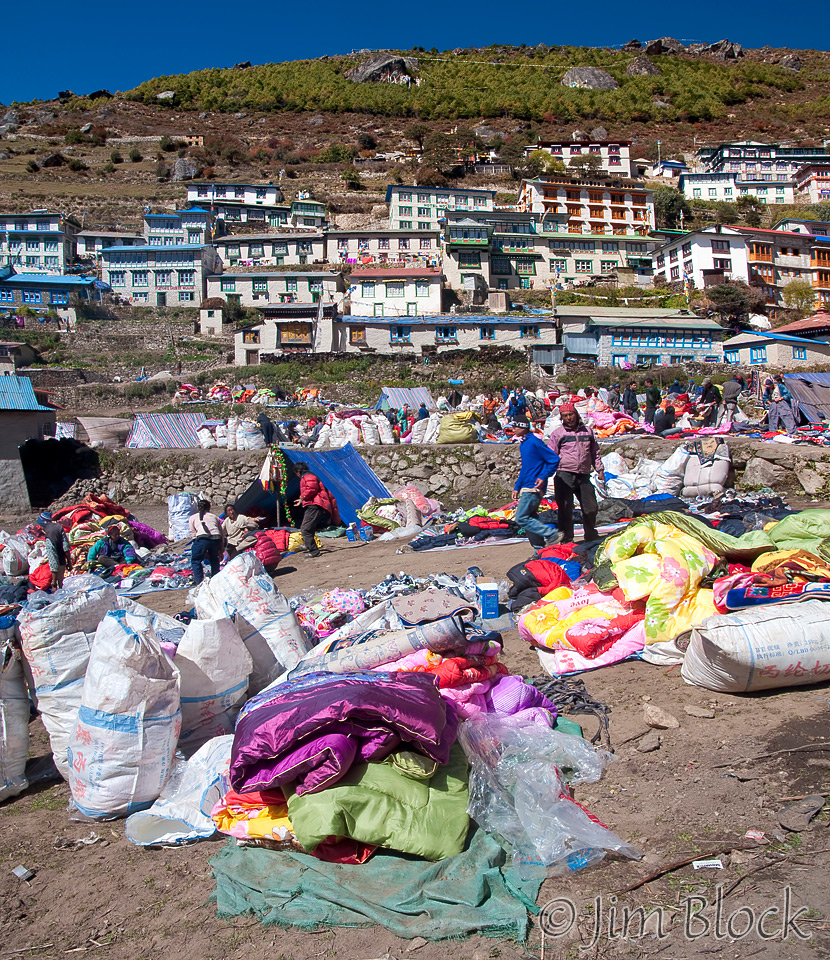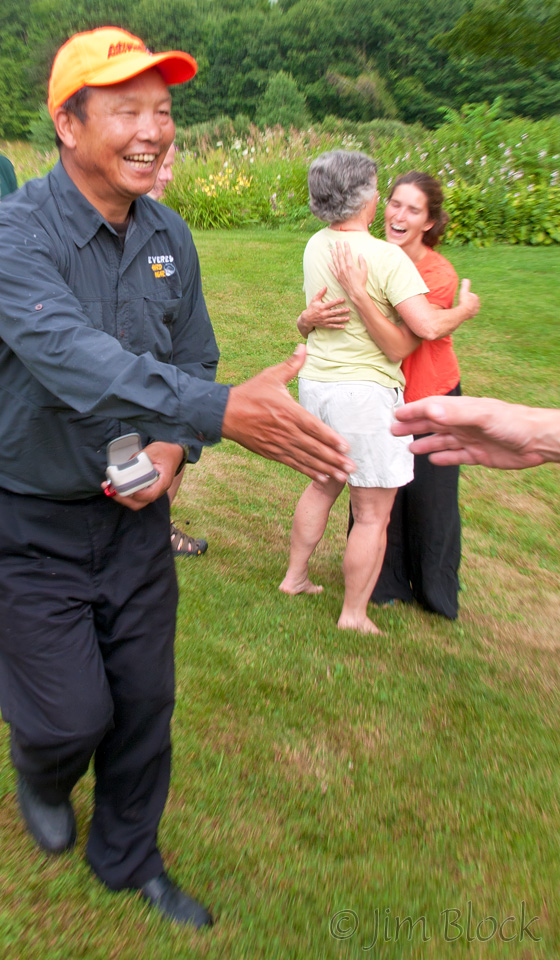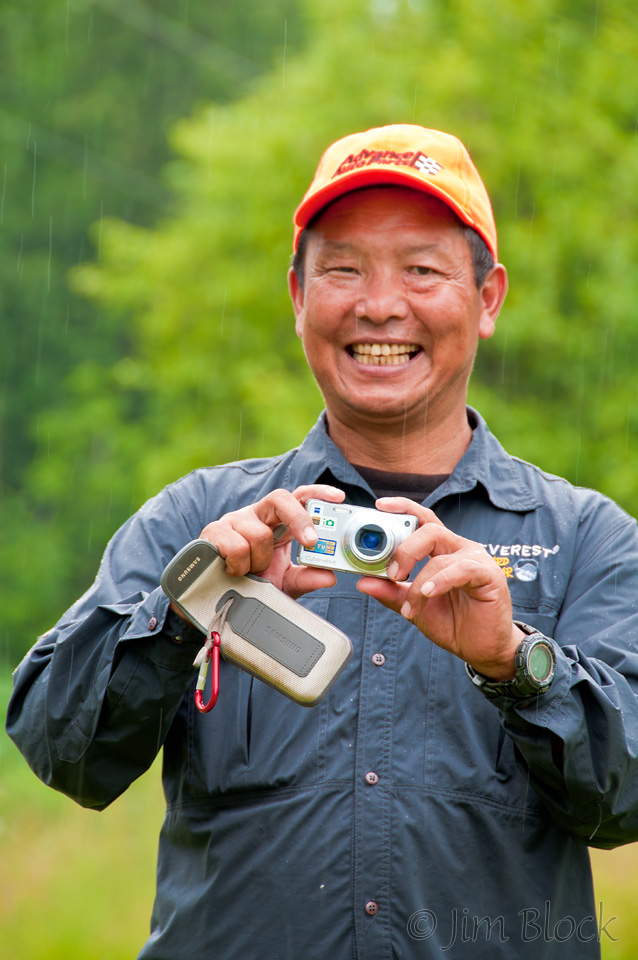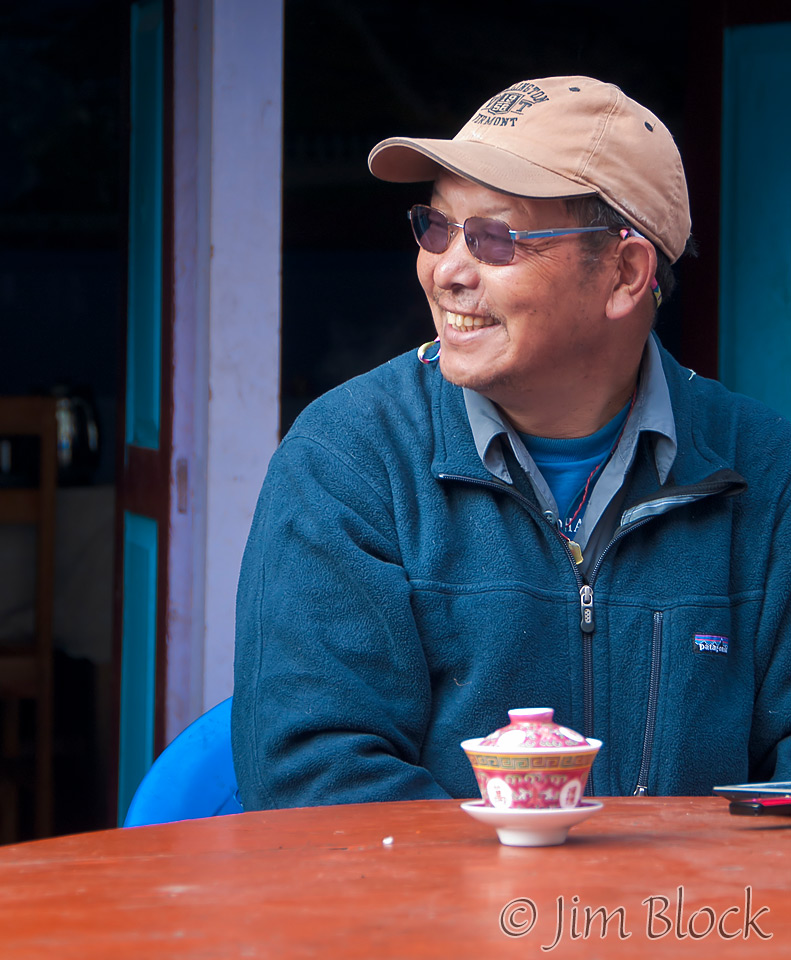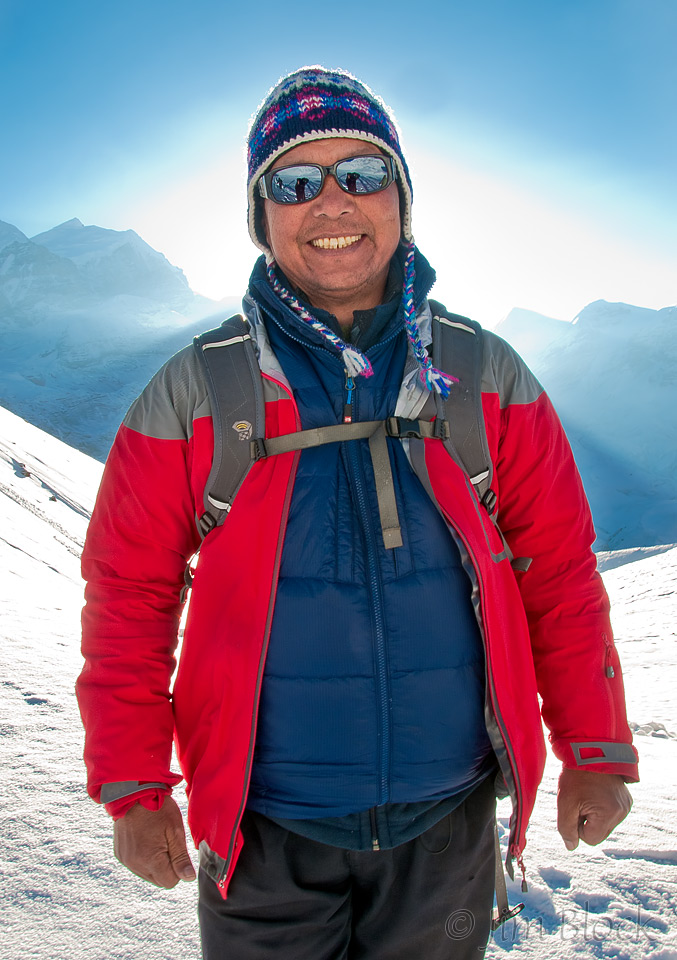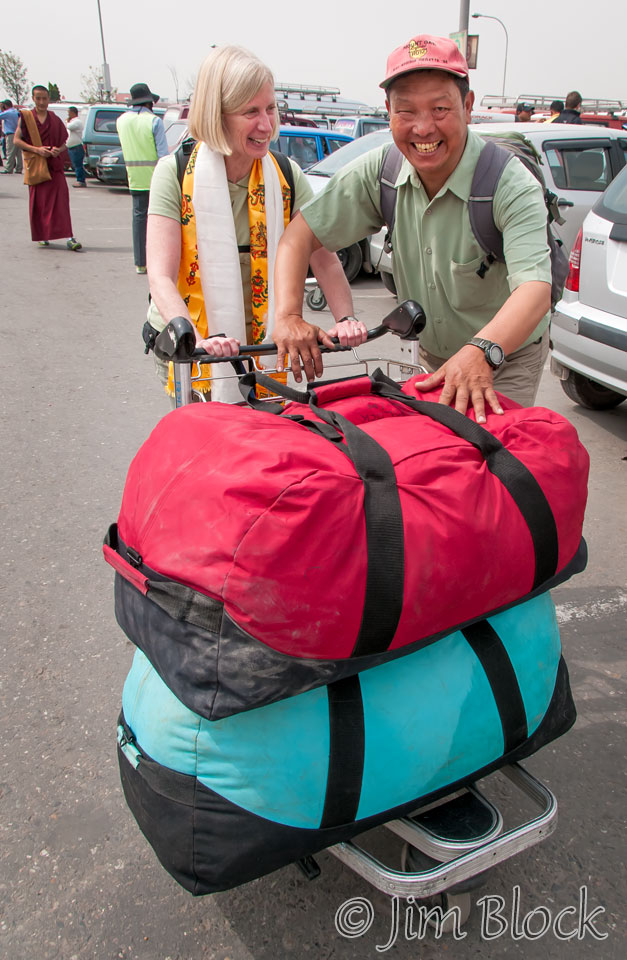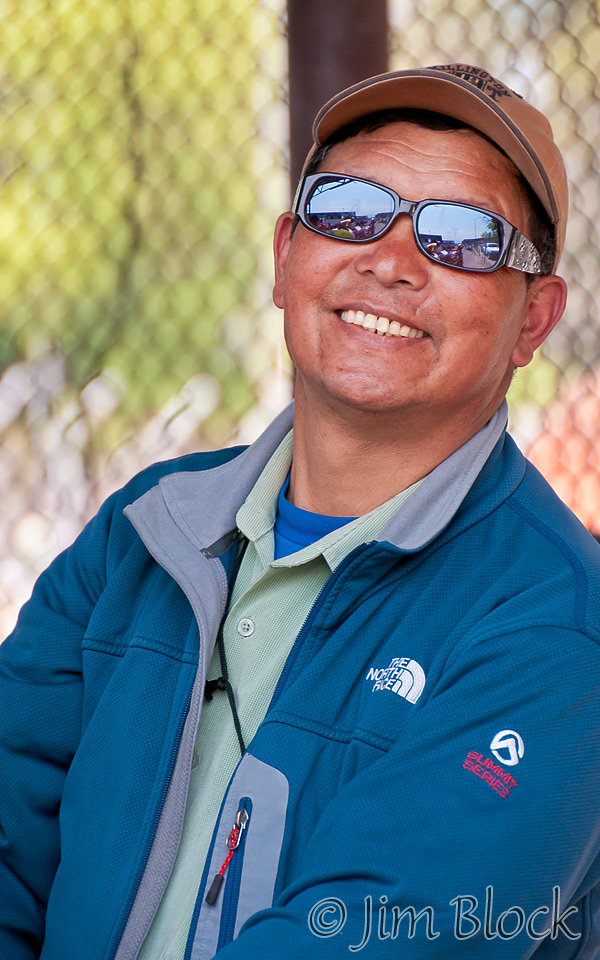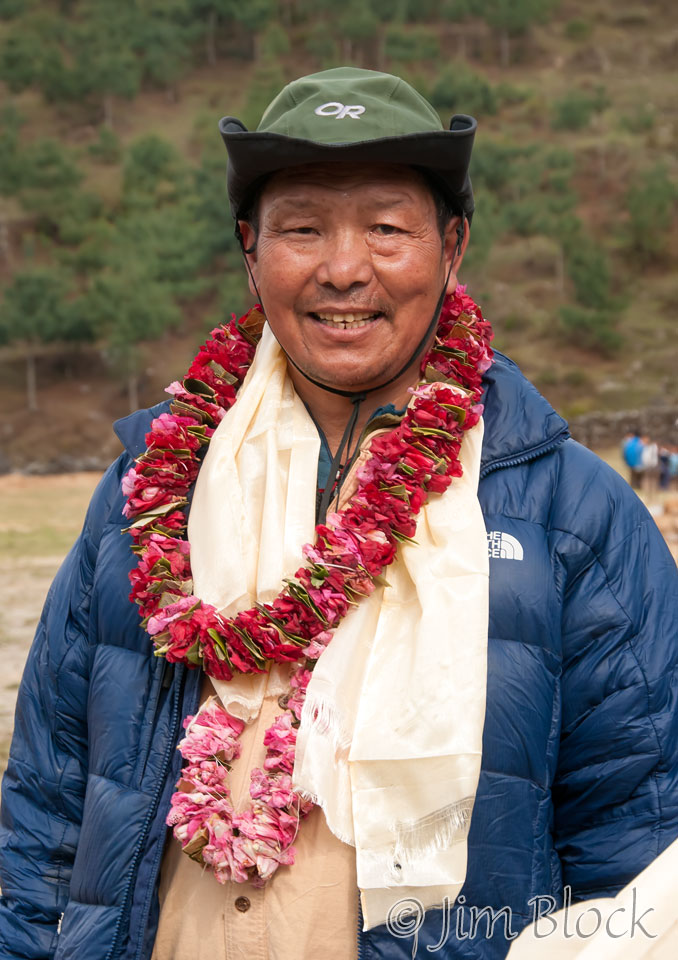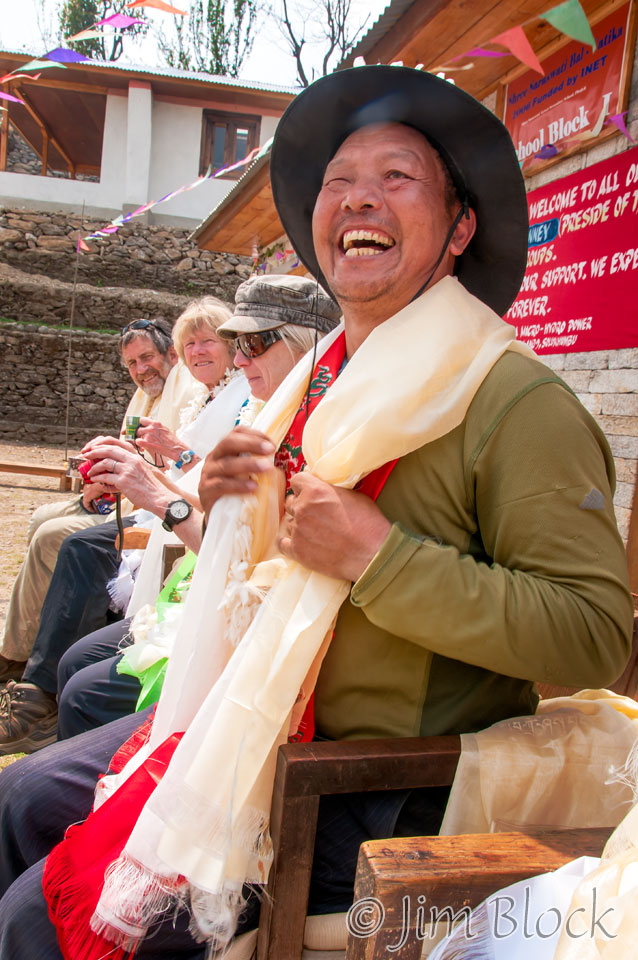Chhongba Sherpa
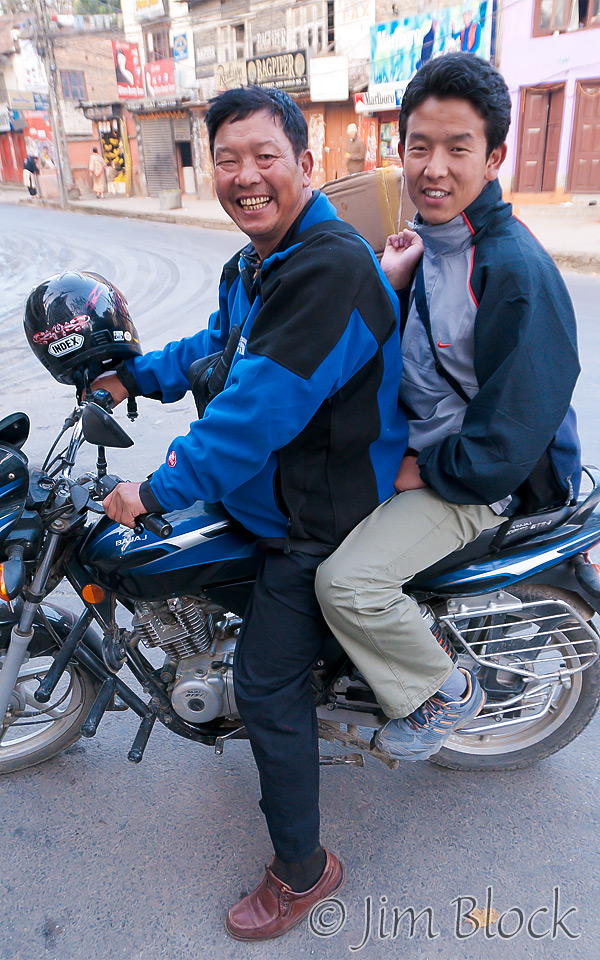
I first met Chhongba Sherpa November 1, 2008 in Kathmandu when he met our plane at the airport after a 36-hour journey. And that didn’t count the time it took us to get to Boston and wait to board the flight to London and then Bahrain.
Over the years Chhongba has become a good friend. I have trekked with him in Nepal four times and visited with him in the US many times including once at our island cabin on Lake Sunapee, NH.
A few days after our first meeting, I happened across him and his son, Pasang, on a motorcycle near our hotel and captured my first photo of him.
We finally arrived in Lukla after a two-day delay due to fog. The plane was full and Chhongba had to catch a later one. But he made it, as seen on the left below with Sarah and Leeli. Denise is behind Sarah.
In the photo on the right below, Chhongba and Leeli walk down a street in Kathmandu.
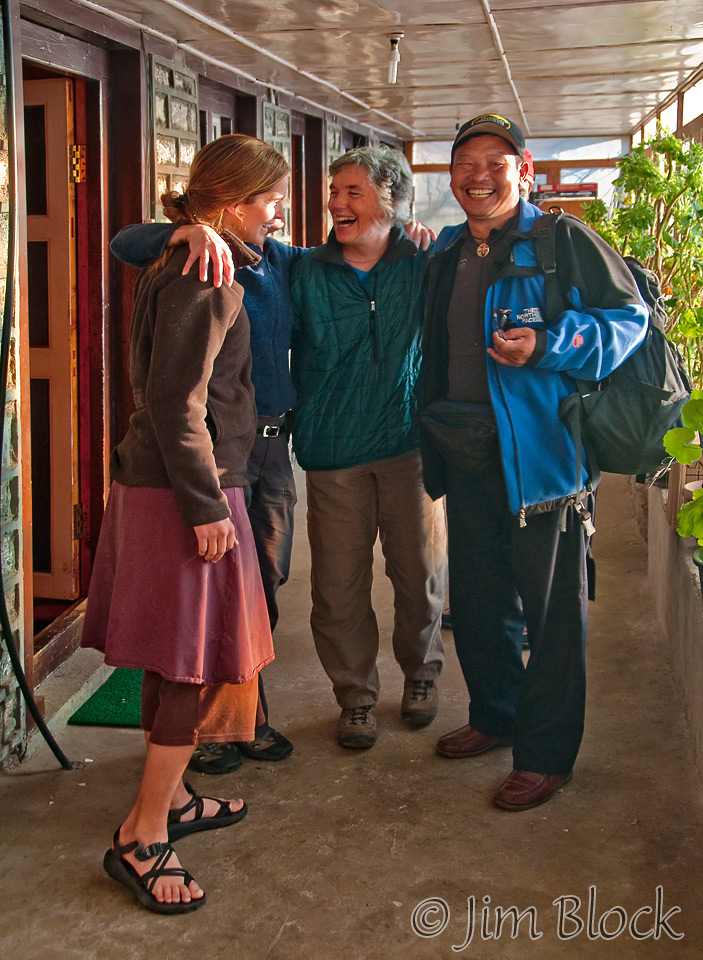
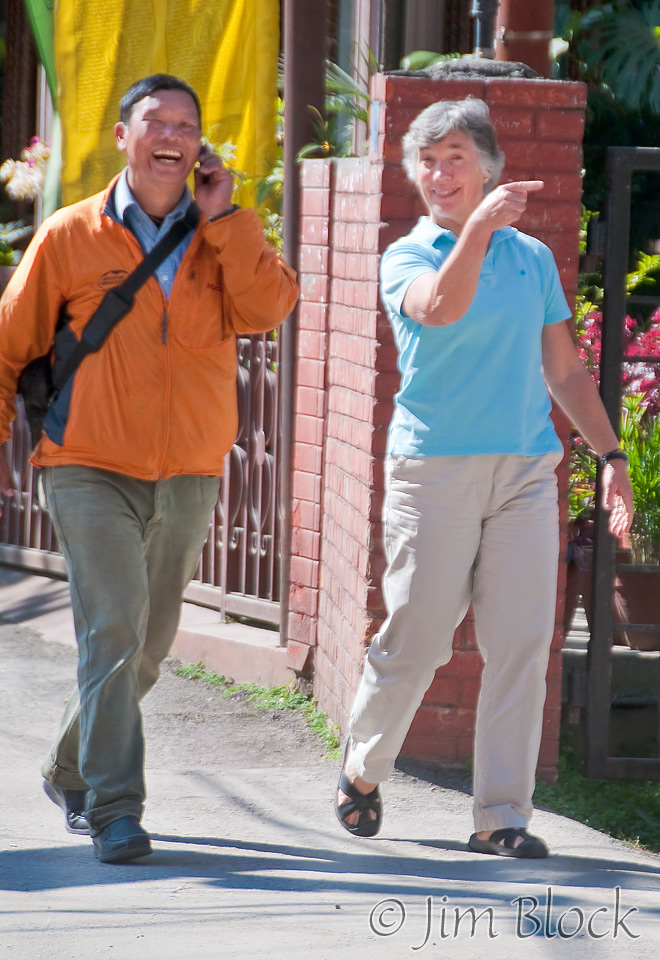
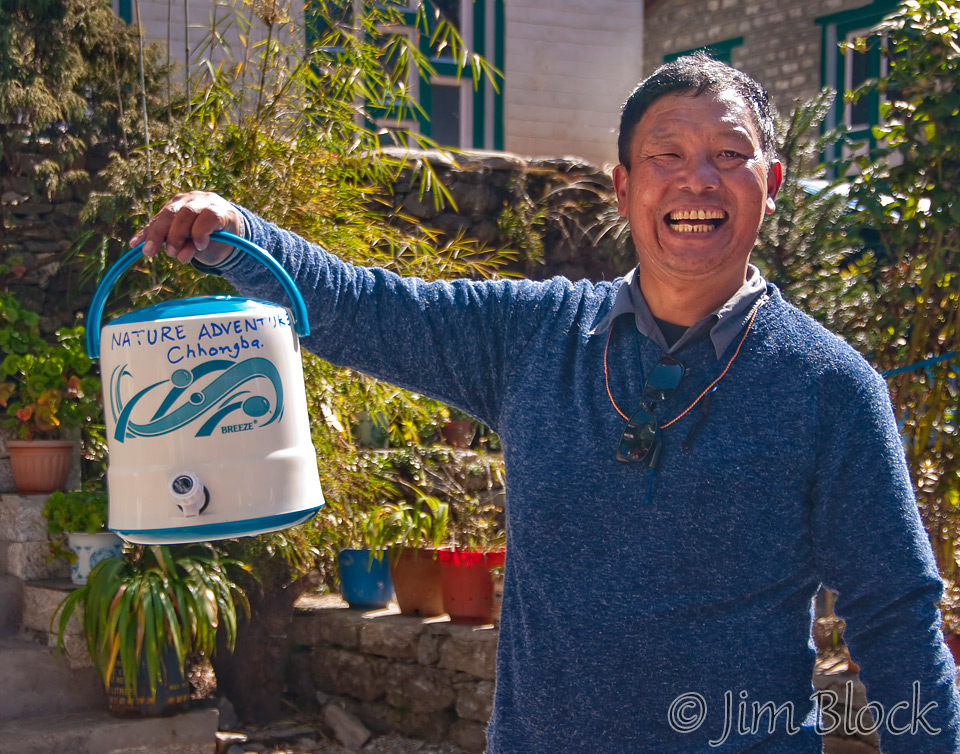
Back in Lukla at the start of our second trip, Chhongba displays the container that would hold our warm “washing water” seen in the photo above.
We always washed carefully and well with soap and water before meals. Even with many precautions, intestinal illness still struck during this trip. Except for a bad cold my first trip, that was the only time I was ill in Nepal. That does not count a severe toothache one trip (leading to a root canal when I got home) and a very sore calf muscle around Annapurna. But overall Chhongba kept us all healthy. That was a challenge, considering the conditions in Nepal.
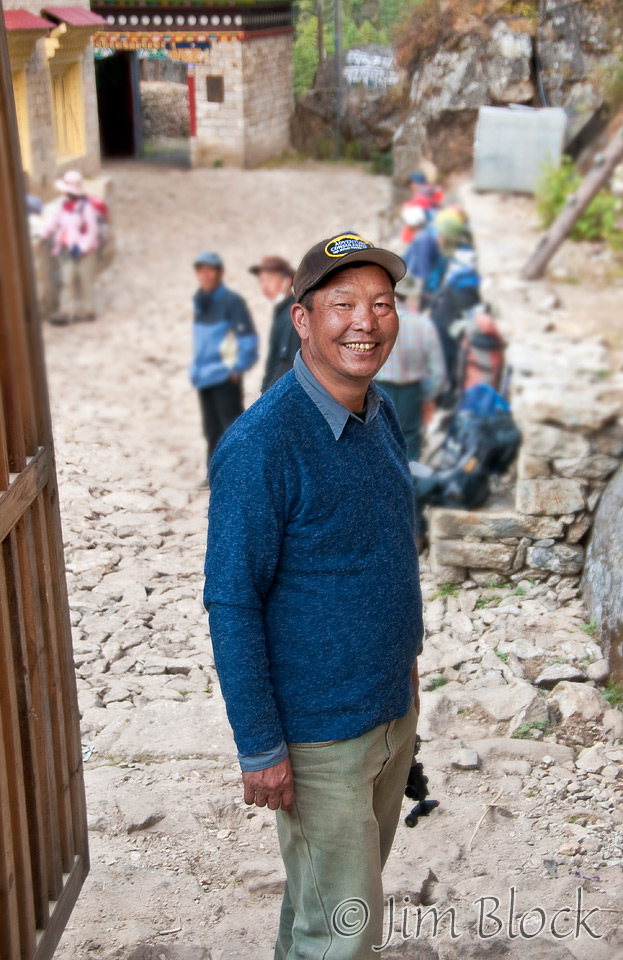
We spent our first night on my second trek in Phakding, a small village north of Lukla full of lodges. The next morning several of our group were quite ill. We walked the relatively short distance to Monjo, and Chhongba got temporary rooms for those that needed to lie down while the rest of us had lunch.
One large group in the lunchroom ordered before us so we had an extended wait. Nepal is famous for its “slow food”. Even in the best of times, getting fed can take a very long time.
Eventually Chhongba decided that it would be best to spend the night in Monjo. In the afternoon Chhongba gave me a private tour of a school and monastery. This was a school where Leeli had distributed jackets during a previous trip.
The photo on the left, taken that same afternoon, shows Chhongba with the gate to Sagarmatha National Park behind him. This park is a UNESCO world heritage site and is the home of Mount Everest.
The historical, local Tibetan name for Mount Everest is Chomolungma meaning “Goddess Mother of the World.” The Nepali name for Mount Everest is Sagarmatha, meaning “Goddess of the Sky.”
We somehow made it to Namche Bazaar the next day after crossing an amazing suspension bridge festooned with prayer flags high over the Dudh Koshi River.
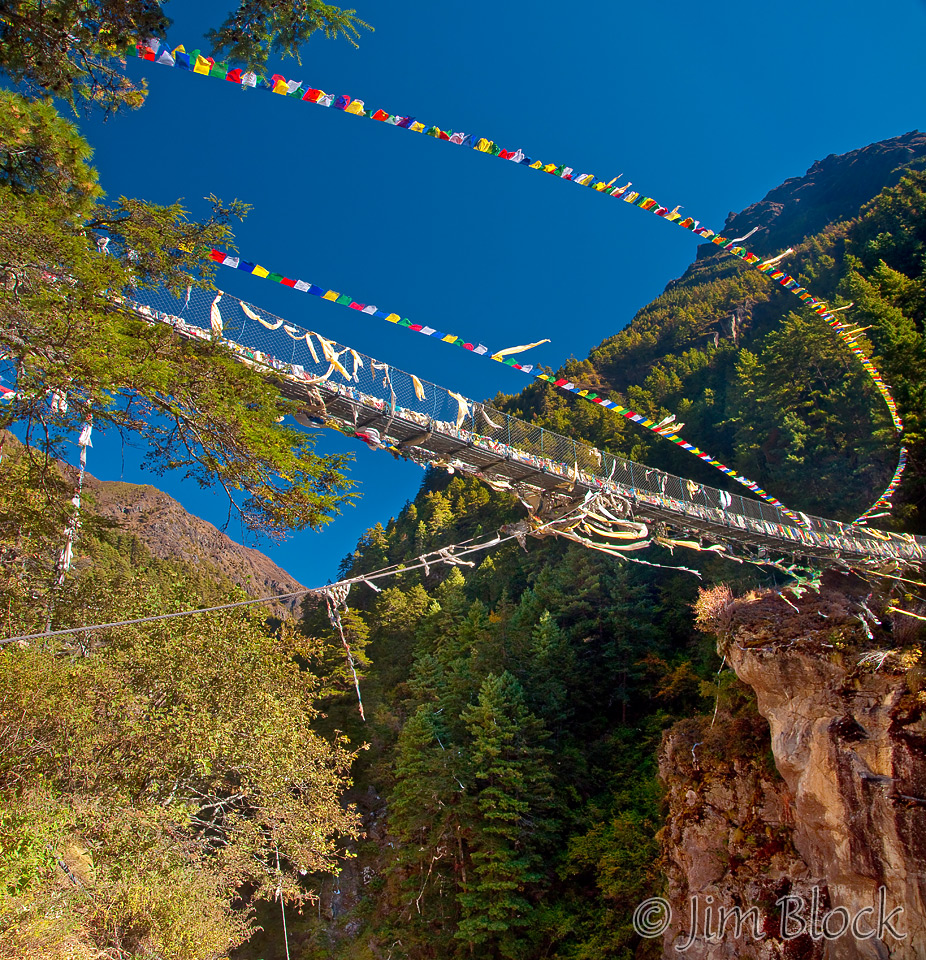
Then it was a long and strenuous uphill slog up to Namche Bazaar, which is situated beautifully in a natural bowl at over 11,000 feet. Namche is sometime referred to as the Sherpa Capital.
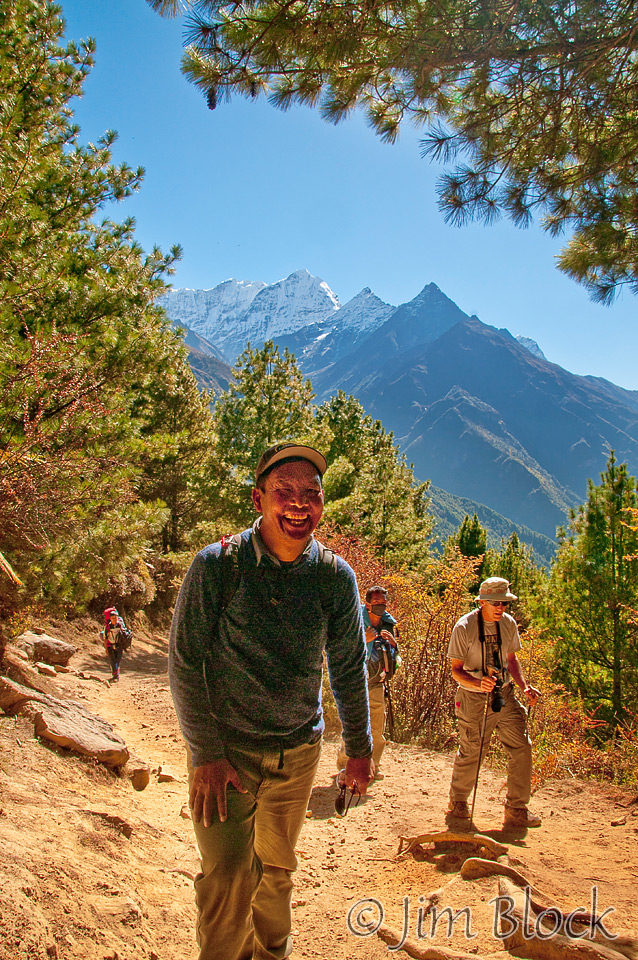
On the left you can see Chhongba and Stephen slogging up to Namche.
Stephen described Chhongba as a one-man NGO. In Namche, Chhongba hired a porter to carry perhaps 100 pounds of blankets three or four days back to his village of Nunthala. He planned to give the blankets to the people in the Taksindu region around his home.
The blankets came from Tibet. This was our first time in Namche, and seeing the Tibetan market place was quite an experience. For about a week men from Tibet were permitted to come down and camp out in the large area below the village to sell all sorts of goods.
Here are a few of the photos of the Tibetan market. How they managed to build the huge hotels seen in the background is mindboggling. There are certainly no roads anywhere near.
After Namche, a wonderful visit to the Khari Gompa nunnery in Thamo, a visit with Chhongba’s son, Dawa, at the school built by Sir Edmund Hillary’s Himalayan Trust in 1961 in Khumjung, and a night at the “No Name Hotel” that we named a week later, we hiked onward in a failed attempt to summit Kala Patthar where we could have looked down on Everest Base Camp. (We finally succeeded on my fourth trip to Nepal.) We stopped to rest along the way with Tengbouche in the background across the Imja Khola valley behind Chhongba.
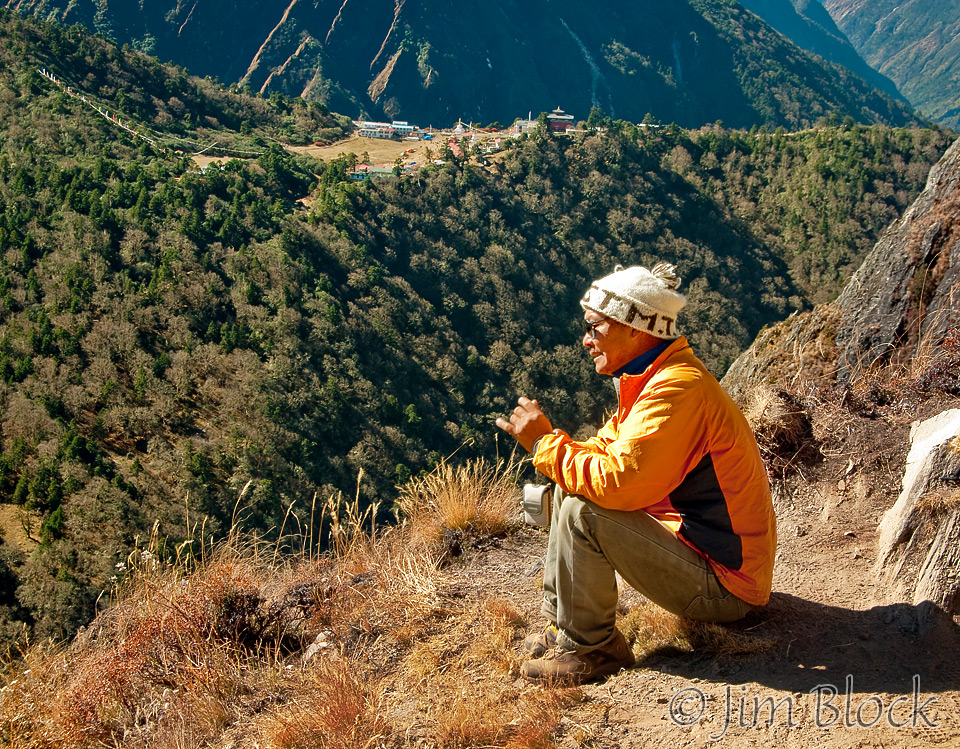
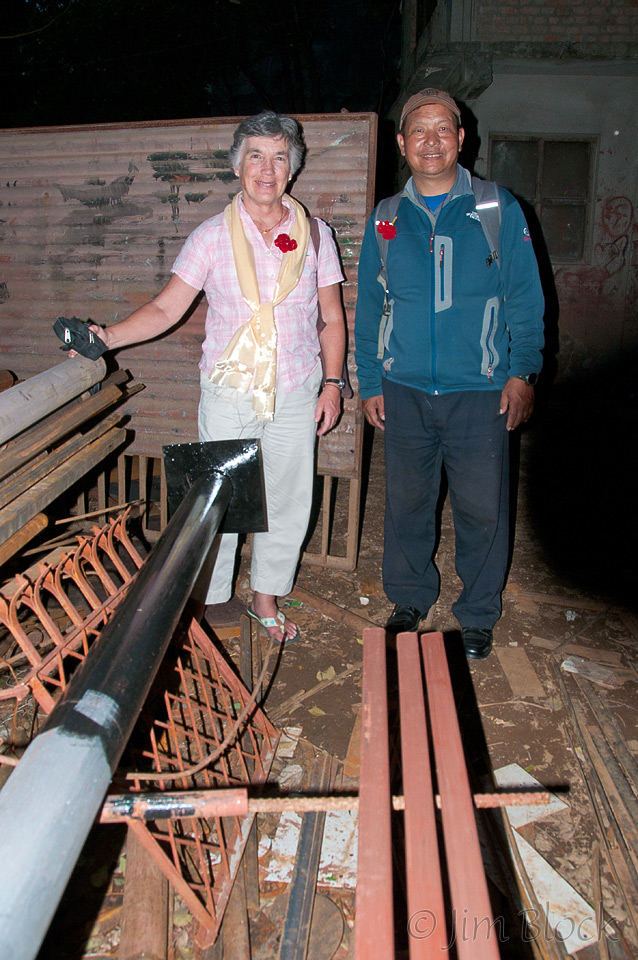
Leeli’s Tara Foundation was bringing metal power poles to the Taksindu region of Nepal where Chhongba lives. These would both replace wooden poles, which were not ecologically sound, and also would extend the minimal power system to other parts of the region.
The poles were fabricated in Kathmandu, trucked to Phaphlu, and from there carried by the villagers from Nunthala and the surrounding regions over the high Taksindu pass. We had hiked that route twice taking two to three days, but they likely did it in one or two, even lugging the heavy poles.
The evening before leaving for our trek around the Annapurna Circuit, I journeyed with Leeli and Chhongba to a site in Kathmandu where the power poles were being constructed. I was elected to join them because I had the biggest camera. We examined the poles, and then Chhongba used the hood of a car to write out a check for partial payment.
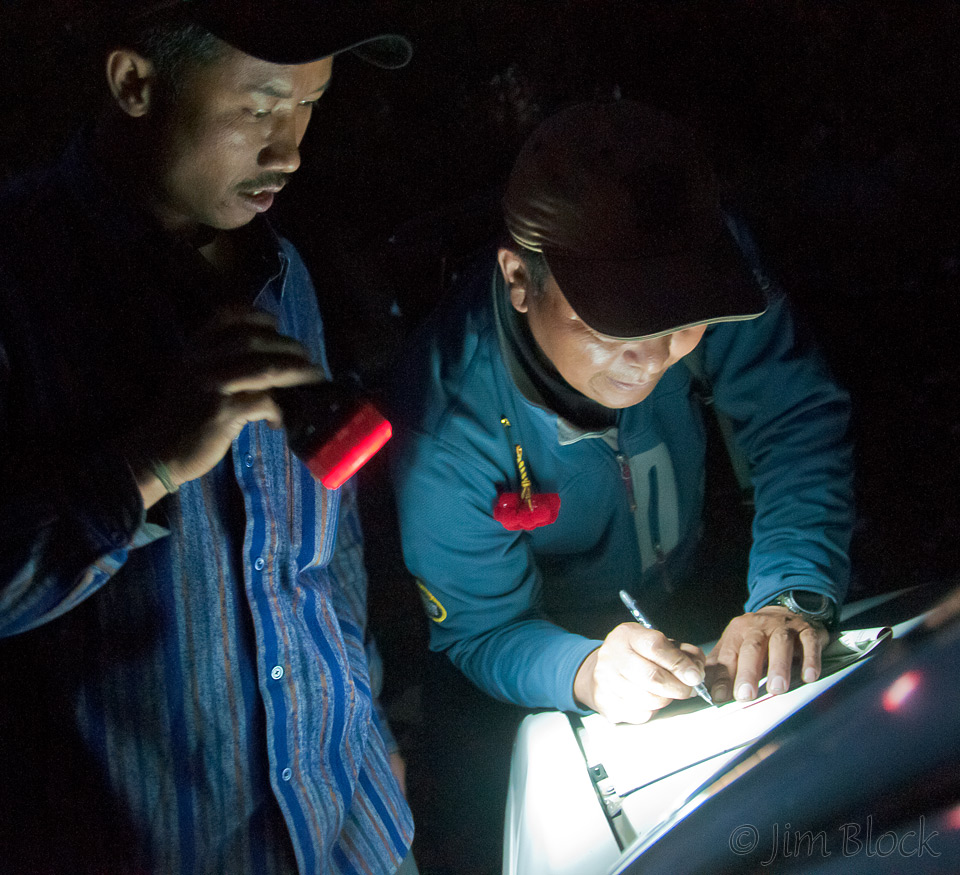
At the Thorong La pass at almost 18,000 feet along the Annapurna Circuit during my third trip, Chhongba displayed a T-shirt which was carried from a great local farm in Plainfield, New Hampshire.
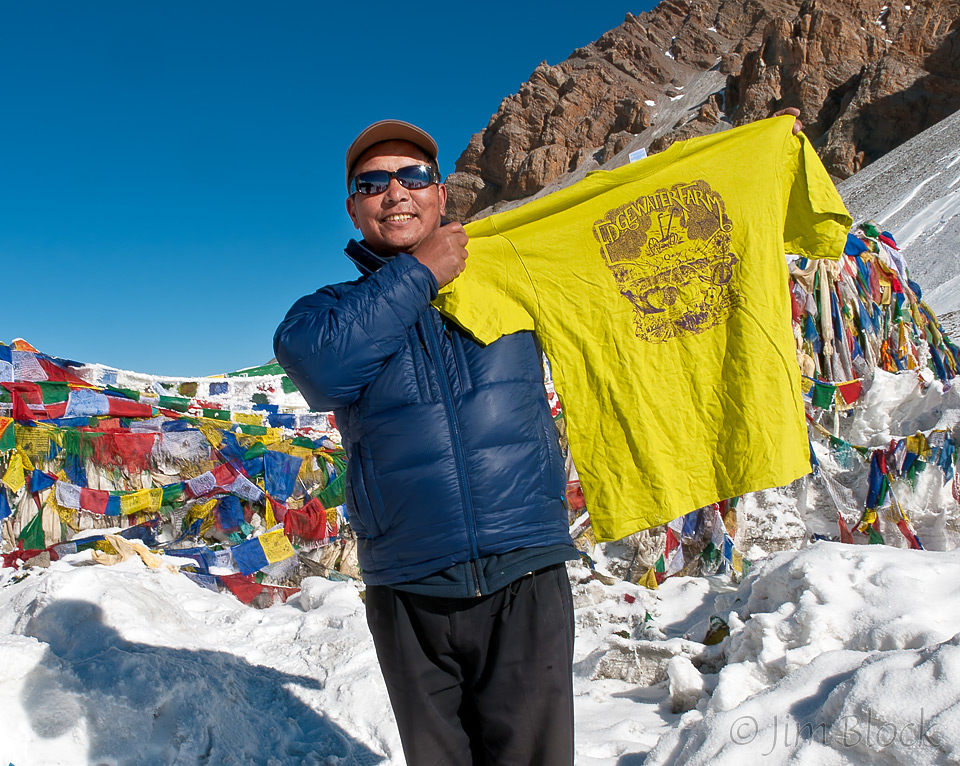
On my fourth trip to Nepal, when we summited Kala Patthar and visited Everest Base Camp, we stayed overnight near the monastery in Taksindu early in the four-week trek. Both Chhongba’s father and “auntie” we’re living there. Here is the photo of the three of them.
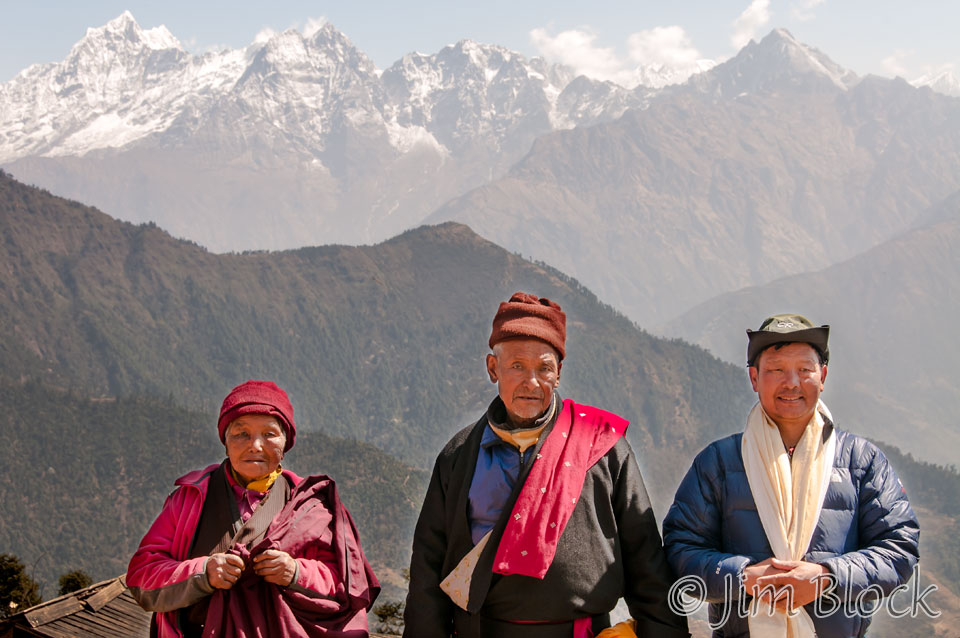
Chhongba has visited the US many times. He is a Director of the Tara Foundation and the Director of the Khumbu Climbing Center in Nepal organized and run by the Alex Lowe Charitable Foundation. Here are a few photos from one of his visits to Meriden, NH at a party at Leeli Bonney’s house. We had a bit of rain and a rainbow that evening.
Here is a collection of other photos of Chhongba taken in Nepal.
If you would like to read a fuller bio of this amazing person you can CLICK HERE.


